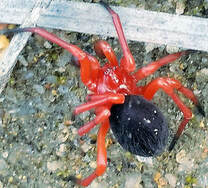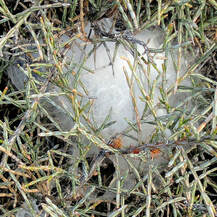Sheet Webs and Webs with Funnel Retreats
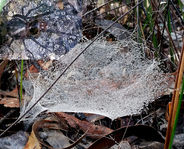
- 1 Flat sheet web on the ground with a funnel retreat in a sedge or ground cover. Webs of this Corasoides sp. spider are very common in open woodland, and are easily seen in Foxes Lair on dewy mornings.
- More information
- Foxypress blog

2 The Wall Spider Oecebius navus is a very common tiny pale brown mottled, semi-translucent spiders that look like untidy spots of dust in corners around edge of ceiling. They hide under a flat web with side exits that is made of very fine cribellate silk.
More information
Oecebius navus
More information
Oecebius navus
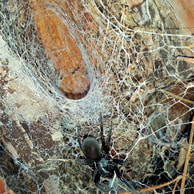
3 The Black House Spider (Badumna insignis) can be seen in corners of every Narrogin house, and often cars. The spiders hide at the base of funnel web that widens out into a sheet of woolly, often messy, cribellate silk. being large, robust, and black, they can be mistaken for funnel web spiders (none in WA), but are in fact very timid. Bites are infrequent and not life threatening.
More information:
Australian Museum- Black House spider
More information:
Australian Museum- Black House spider
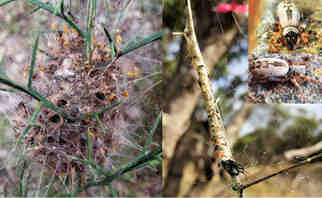
4 Social Webbing spiders (Phryganoporus candidus), live singly in narrow cone retreats in triangular lace webs during the autumn-winter than come together in spring to create large social breeding webs of about one hundred individuals in shrubs like stinkwoods and hakeas.
More information
Foxypress blog
Arachne website
More information
Foxypress blog
Arachne website
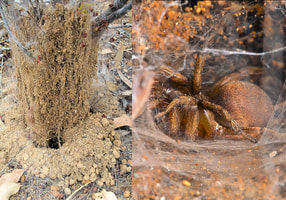
5 The Sand-curtain spider (Cethegus fugax) is a mygalomorph trapdoor spider that creates a sandy web usually at the base of a sedge or shrub that is easily seen in the dry months. Despite their fearsome appearance they are very shy.
More information
Foxypress blog
More information
Foxypress blog
|
The Red and Black Spider (Nicodamidae) has a sheet type tangle web that around rocks and other debris. It been categorised as a tangle web spider
|
|
False wolf spiders (Family Miturgidae also called Prowling spiders) are ground hunters that build this example a globular resting web in a low Allocasuarina shrub
|
